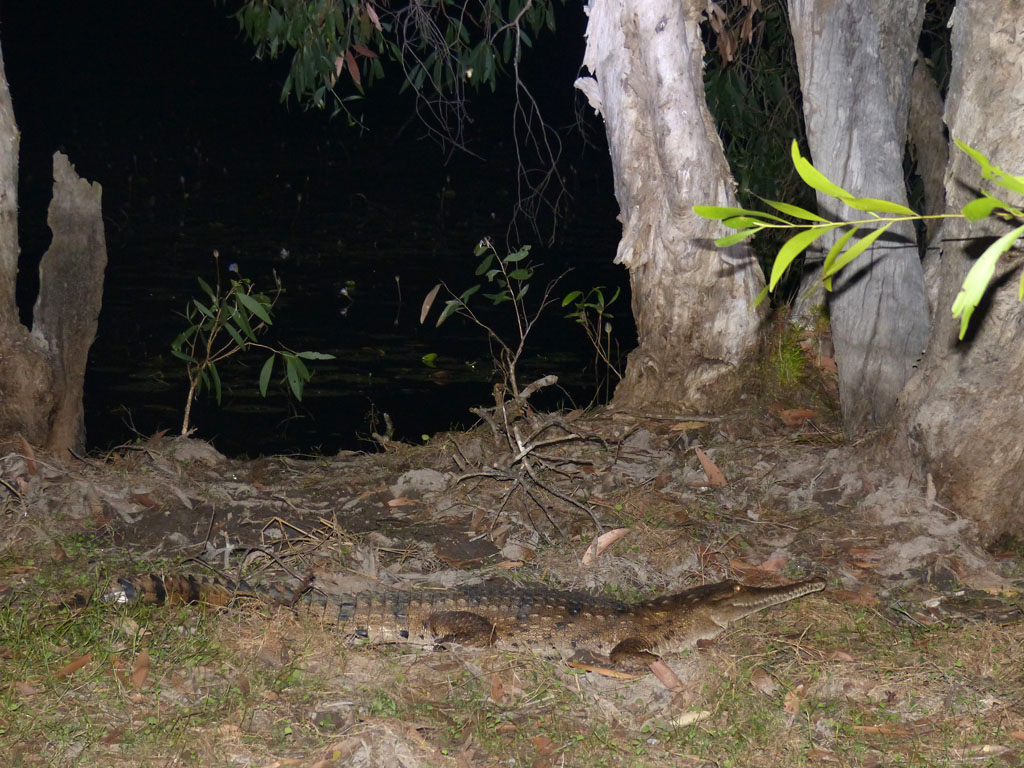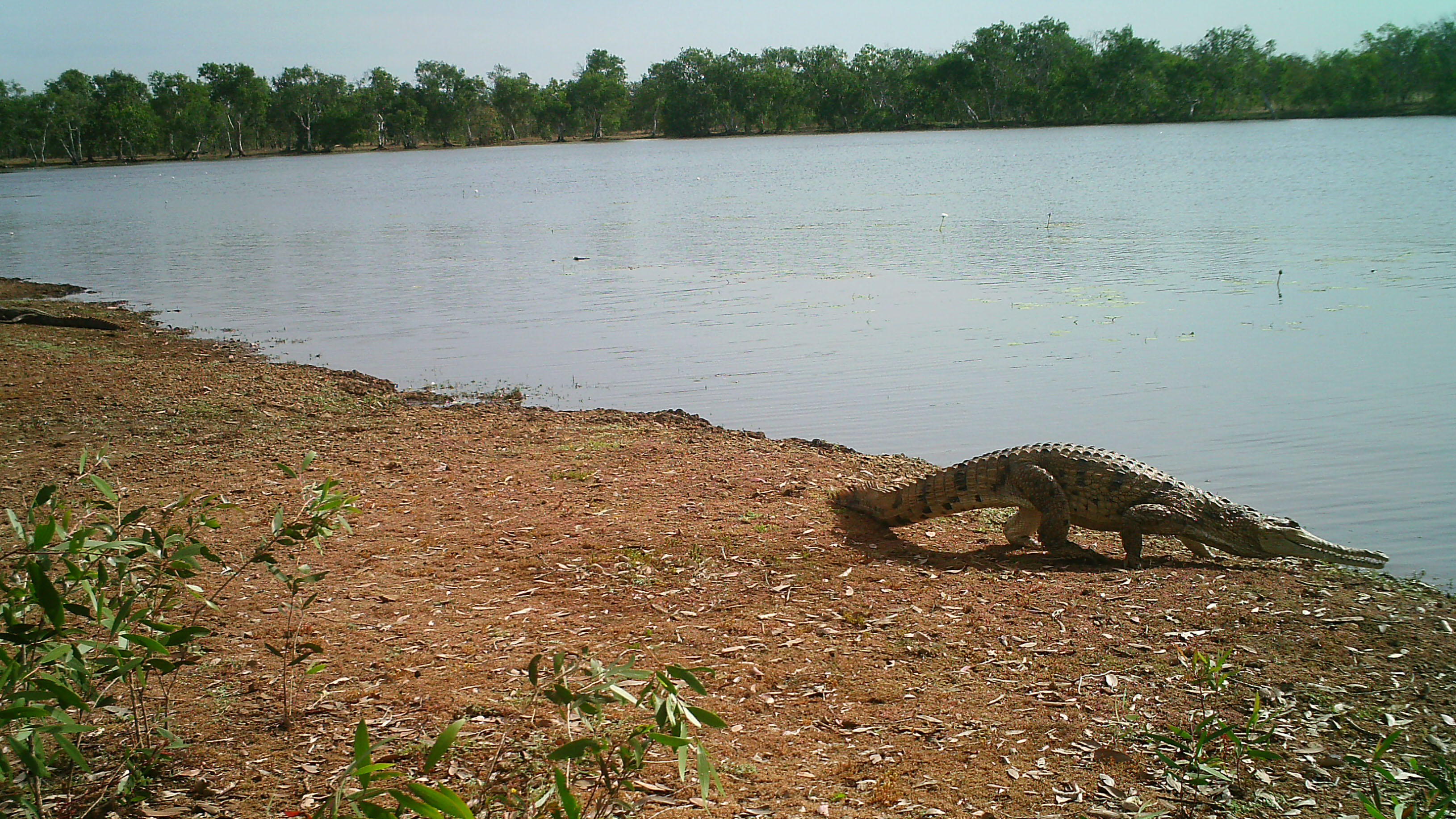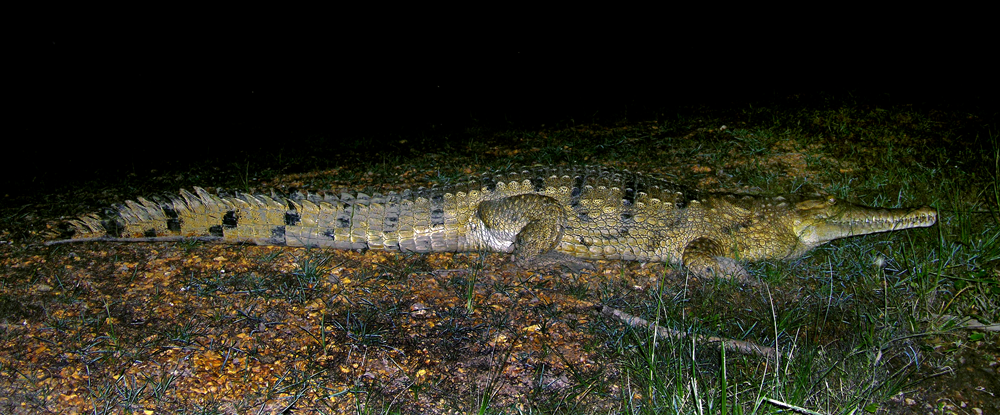Freshwater Crocodiles
The Freshwater Crocodile (Crocodylus johnstoni) is found only in northern Australia, and is little understood compared to the larger more dangerous Saltwater Crocodile (Crocodylus porosus). Freshwater Crocodiles are not dangerous in the way Saltwater Crocodiles can be, but they can cause injury if their personal space is not respected. They are a fascinating animal to watch in their natural environment and range in size from 15 cm hatchlings up to 3.5 metre adults, which can be seen at Alligator hole.
Freshies, with their long narrow snouts and very sharp pointed teeth eat fish, birds, amphibians, reptiles and bats, and especially large freshies may also take wallabies. However unlike salties they do not hunt such large prey as pigs, and so do not view humans as a food source. As hatchlings and young crocodiles, salt and freshwater crocodiles have similar diets, but saltwater crocodile's size moves them on to other prey items, including smaller salt and freshwater crocodiles.
At Alligator Hole there tends to be a few Saltwater Crocodiles, and dozens of Freshwater Crocodiles. The Freshwater Crocodiles spend their evenings toward the shallower edges of the billabong, while the largest salty is usually noticed hanging in the middle of the billabong.
Over the nearly 20 years we have been regularly visiting and spending time at Alligator Hole we have noticed many small, almost hatchling sized freshies. We of course assumed there must have been breeding happening in the area. Freshies breed in sandy spots along river and billabong banks, with their young hatching in the early Wet Season. In late 2018, thanks to a poor start to the Wet, we were able to get in to Alligator Hole in November. We found at least two-dozen hatchlings and their nest, easily identified by their broken scattered eggshells. We were of course very excited by the find!
The images below were taken at Alligator Hole.






